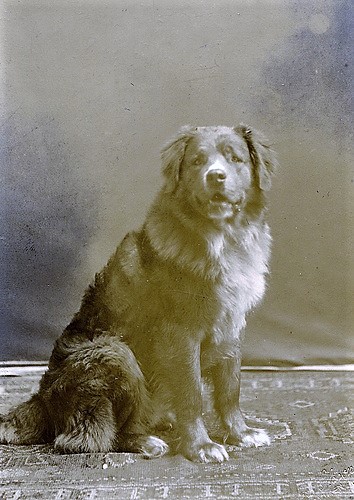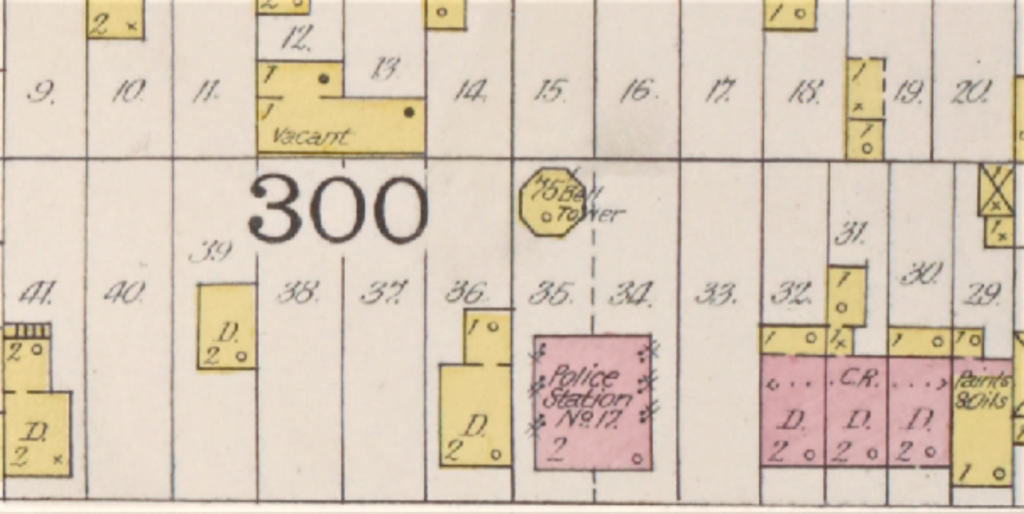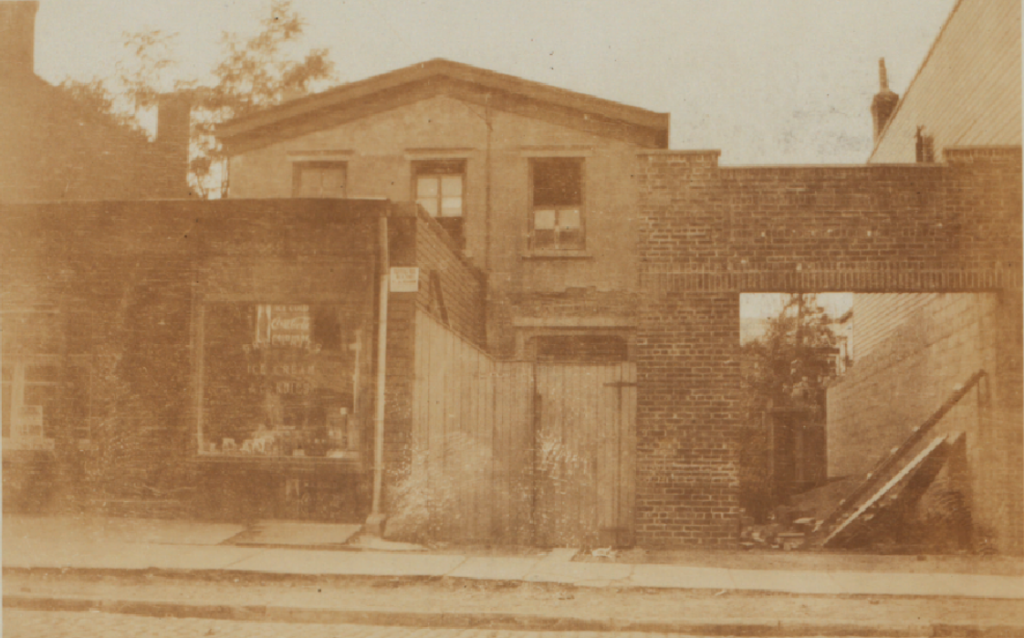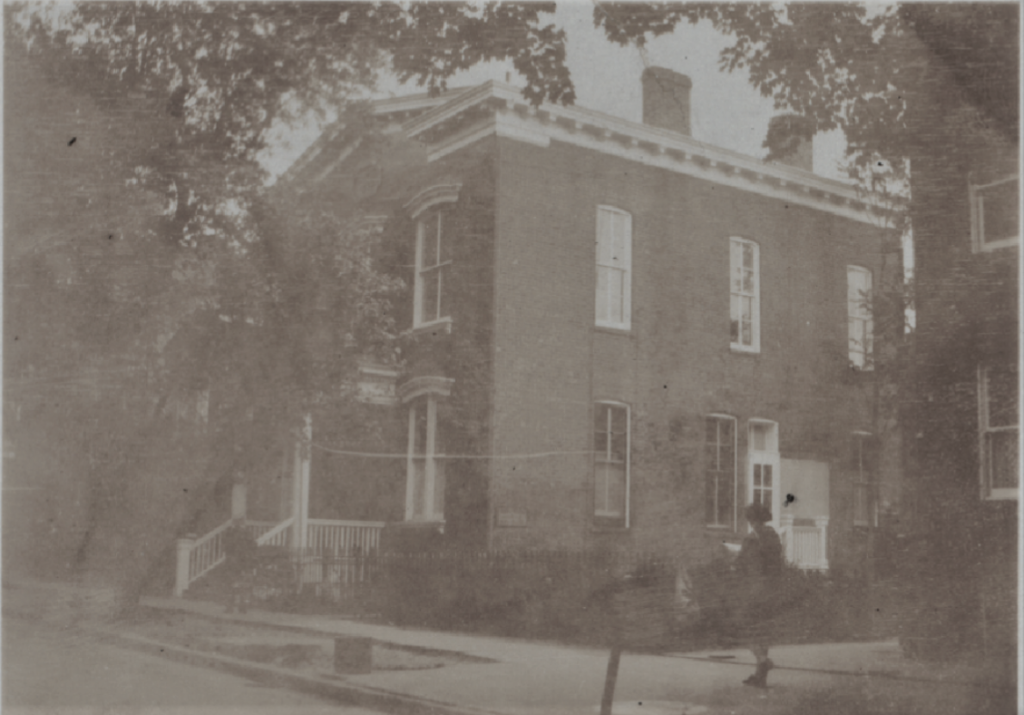
In Part I of this story about the four-legged mascots of Brooklyn’s old Liberty Avenue police station, we met Dewey and Dick, the beloved felines of what was then called the 153rd Precinct. In Part II, we’ll meet Nick, the canine predecessor of Dewey and Dick, who served with the former East New York Police Department in the old Town of New Lots in the late 1800s.
Visitors to the old East New York Police Station never failed to notice the large Newfoundland dog sitting about as if he owned the place. The old dog, described as long and shaggy and turning gray around the face, was a favorite among all the policemen as well as “citizens in general and reporters in particular.”
With “sterling qualities, his intelligence and his friendly feeling toward the law abiding portion of the human race,” Nick had truly earned his sergeant’s stripes.
Sit back and enjoy this wonderful tale of an honorable police dog.
Sergeant Nick’s Early Years
Sergeant Nick was born in Jersey City, New Jersey, on August 1, 1869. That made him almost 17 when a Brooklyn Daily Eagle reporter came to visit him in July 1886.
Nick was the puppy of James Davis, the proprietor of a starch works company at Liberty and New Jersey Avenues in 1886. According to Davis, Nick took a fancy to the blue coats and brass buttons at a young age, and he spent several years with the police officers in Jersey City. When an African-American policeman named Andy Magee took a new position at Davis’ plant in Brooklyn, Nick went along with him.
At the starch works yard, Nick followed Magee everywhere and rarely socialized with anyone else. Over time, Davis grew to appreciate the dog’s value as a watch dog (whenever he found pieces of torn clothing on a fence, he knew that Nick had been doing his job!). He also became just as attached to the dog as Magee was, even though Nick was not very friendly with either man.

When Nick was about three years old, Magee passed away. Two weeks later, Nick went missing from the yard. After a week’s search, Davis found him at the New Lots police station. The men there seemed very fond of the dog, and no amount of coaxing could bring him back to the starch works factory.
Davis said he believed that Nick had gone to the police station in search of his friend, somehow knowing that Magee had once worked as a policeman in Jersey City and thus, may have returned to his previous career.
Sergeant Nick’s Life as a Canine Cop

According to Sergeant William F. “Billy” Early of the East New York Police, Nick was “the most remarkable dog in existence.” He was always ready to go out with the men on the 6 p.m. platoon, making all the rounds with them and then returning to the police station in time to follow the men of the midnight tour. In the course of one night, the dog would cover 42 miles of streets before reporting back to the station in the morning.
Sergeant Early recalled a time when Brooklyn held a parade and barbecue at Ridgewood Park (Highland Park) in honor of Presidential Candidate Grover Cleveland. The event, which took place in October 1884, featured a three-mile procession through the crowded streets, followed by cannons, 60,000 sandwiches, 5,000 kegs of beer, an evening torchlight parade, and a brief address by the New Jersey native and candidate himself.
That day, 10 mounted policemen marched in the parade, representing the New Lots police force. Nick marched alongside them the whole way, displaying two American flags fastened to his collar and wearing a picture of Cleveland around his neck.
During the event, Nick went missing. He returned to his men a while later carrying a piece of barbecued ox in his mouth. As Sergeant Early noted, “He looked at me with an air of satisfaction, as much as to say, ‘I’m the only New Lots policeman who got a piece of that ox.’”
The sergeant recalled another time when Nick was with Patrolmen Howard and Soper on a part of Alabama Avenue known as The Bowery. The men came upon three men engaged in a fight; the two patrolmen each grabbed a man and Nick threw the third man to the ground, tearing his coat, vest, and shirt to shreds in the process. The policemen rewarded Nick with a new gold collar inscribed, “Sergeant Nick, New Lots Police.”
Another sergeant, Christian Reimels (who was the captain when Dewey and Dick were on the job), recalled a riot at Judge William Schiellein’s Hall, which was a hotel located on the southwest corner of Atlantic Avenue and Vermont Street. Someone in the rowdy crowd had knocked down a policeman, and Nick held the man at bay until his partner recovered. Nick kept to the policeman’s side all the way back to the station until the offender was placed in the cell.

East New York Police Detective Bob Kortright told a story about the time he had to chase a horse thief, who was outrunning him. Sergeant Nick appeared on the scene, gave chase, and knocked the thief over until Kortright could secure his prisoner.
Roundsman Chesterfield Fischer also had a great story to tell the reporter:
“We trailed a burglar one fine night last June until we located him behind a brick wall on Smith Avenue. As the garden was full of strawberries we did not like to destroy our friend’s beds by jumping over, but we posted men around the lot so as to prevent the burglar’s escape. While we were deliberating on what course to pursue, we saw Nick come on a run from the middle of the street, and, before we had time to stop him, jump over the wall.

There was a picnic for a time, but not of a strawberry kind to the burglar, for it was not long before we heard the man sing out, ‘Take away the darned dog and I’ll surrender.’ We called off the dog, the burglar kept his word and came with us to the police station. The burglar got three years, but I’m afraid the dog would have got a load of shot if the owner of the lot found out who it was that destroyed his strawberry bed.”
As Sergeant Nick was now almost 17 years old, the reporter asked the men what would become of Nick in his old age.
Roundsman Parson Ringheiser replied, “He will be recommended to the Commissioner for promotion, but if, in his judgment, the dog’s age will be a bar to further usefulness, then we will position that Sergeant Nick be presented with a gold medal and a pension. I believe the whole community in the new ward will indorse such petition.”
A Brief History of the New Lots Police Department
The origins of the East New York Police Department, also known in past years as the 153rd, 17th, and 44th precincts, has ties to the first fire department in what was once the town of New Lots in Kings County.
In 1860, eight years after the town of New Lots seceded from Town of Flatbush, a few men formed a volunteer fire department for New Lots. The men of Liberty Hose Company No. 1 built a 75-foot tall, octagonal wooden bell tower at 109 Bradford Street, about halfway between Fulton Street and Atlantic Avenue. They manned this tower 24 hours a day, 7 days a week. It was all the sparsely populated town needed at this time.

In 1870, the State Legislature passed an act colloquially known as the “Tweed Charter” that returned police powers from the Metropolitan Police (established in 1857) to the Municipal Police. This left the town of New Lots without police protection.
Under an amended Brooklyn Police bill, the town was authorized to apply to the Police Commander of the City of Brooklyn for the appointment of as many police officers deemed necessary. Captain William F. Early, George Schienk, and Steve Newman were appointed as the first New Lots policemen. The men reported daily to Justice Gertum at the town’s courthouse and locked up prisoners at the 9th sub-precinct station house at Broadway and Gates Avenue in Bushwick.
Without a station house, the town rented a two-story stone and frame building on Liberty Avenue near Smith Street (Hendrix Street) for use as a lock-up for prisoners. (Reportedly the stones were so loose, and the bars were so wide, prisoners often escaped very easily.) By 1872, New Lots had six police officers.

The small rented building did not meet all the police force’s needs, so the Town Board purchased a 100 x 50 foot site on Butler Avenue (now Bradford Street) from Horace A. Miller for $1,400. This was the lot where the fire bell tower stood. There, in front of the tower, they constructed a multi-purpose town hall/police station at the cost of $10.000.
The New Lots Town Hall opened on December 11, 1873. The two-story with raised basement building housed the New Lots police force and town offices on the first floor and the fire department on the second floor. A large auditorium was devoted to public concerts and the basement had four cells for prisoners. By 1878, the police force had nine men, including sergeants Henry French and Pete J. Kennedy.

Incidentally, during this time, the old fire tower was reportedly used as a morgue. Apparently, many people were killed by getting hit by trains on the Long Island Railroad before protective barriers such as gates and fences were put up, so the morgue was a busy place.
On August 4th, 1886, one month after the Brooklyn Daily Eagle reporter wrote the story about Sergeant Nick, the Town of New Lots was annexed into the City of Brooklyn, becoming the 26th Ward of the city. Sergeant French was appointed as the acting captain of the new 17th Police Precinct. The police department took charge of the entire town hall building from this time until 1892, when they moved into their new headquarters on Liberty Avenue. By this time, Sergeant Nick would have passed.
The old town hall building remained empty for many years, and the fire tower was eventually demolished. On November 13, 1899, the 26th Ward Homeopathic Hospital and Dispensary (aka East New York Dispensary) opened in this building. Later called the Bradford Street Hospital, the walk-in health facility remained open until about 1936.
Today this old firehouse/town hall/police station/prison is a two-family house.




